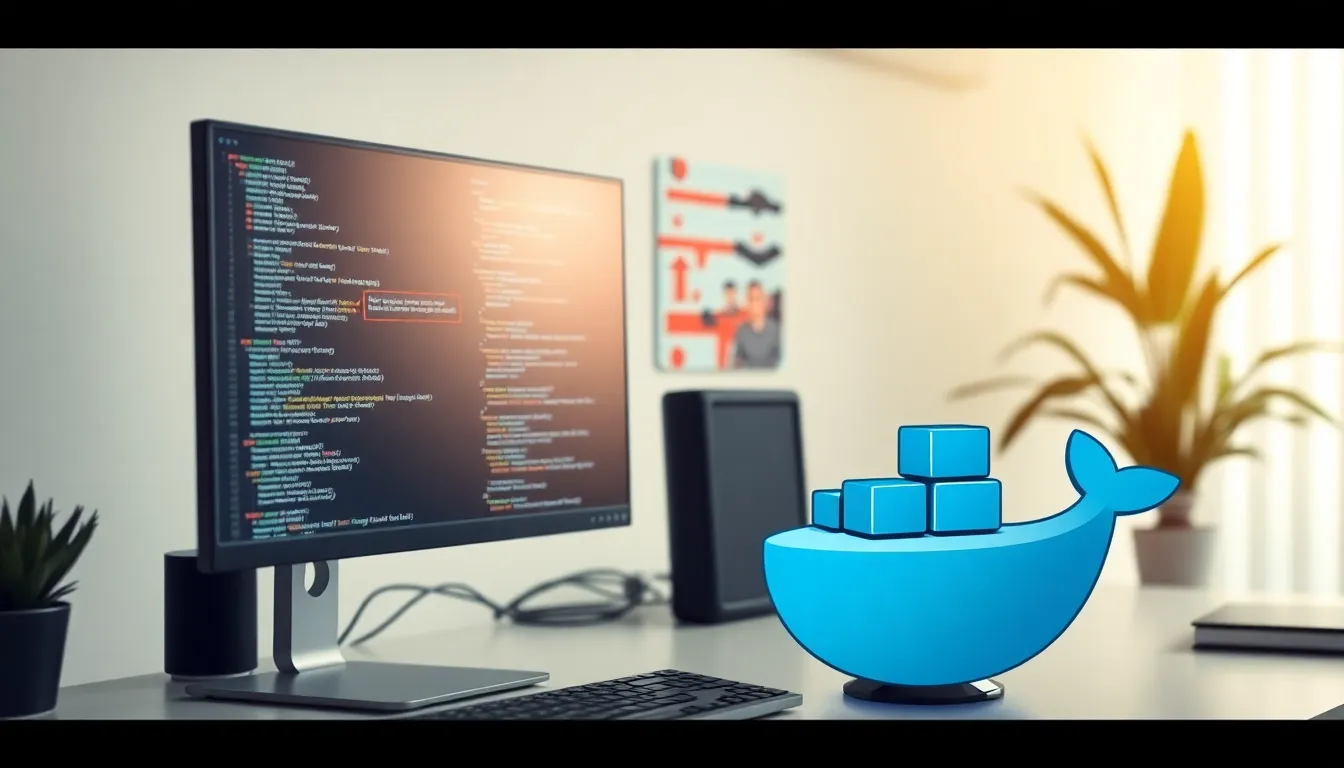In the fast-paced world of software development, Docker has become the superhero every developer needs. But even superheroes have their kryptonite, and for Docker, it’s the dreaded poorly written Dockerfile. Crafting a Dockerfile that’s clean, efficient, and maintainable can feel like trying to assemble IKEA furniture without instructions—frustrating and often chaotic.
Table of Contents
ToggleUnderstanding Dockerfile Best Practices
Creating an efficient Dockerfile requires several best practices to enhance performance and maintainability. Prioritize reducing image size by using lightweight base images, such as Alpine. Start with specific dependencies listed, aiming for minimal installations to limit vulnerabilities.
Utilize multi-stage builds to separate build stages from runtime environments. These builds enable efficient layering and reduce the final image size. When copying files, ensure only necessary files make it into the image to optimize build context and security.
Leverage caching by arranging Dockerfile commands logically. Frequently changing commands should follow less likely to change ones. This sequence helps re-use cached layers, resulting in faster builds.
Minimize the number of layers created by combining related commands into a single line. Achieve this by using && operators between commands. Additionally, prefer RUN, CMD, and ENTRYPOINT commands wisely for different execution purposes.
Set non-root users for applications when possible to enhance security. A Dockerfile that uses a dedicated user prevents potential risks associated with running as root.
Include clear documentation in the Dockerfile with comments to describe the purpose of each instruction. This transparency aids future developers in understanding the file structure and intent.
Utilize environment variables for configuration settings to promote flexibility. This practice makes containers adaptable to different environments without hardcoding.
Follow these Dockerfile best practices to create effective, efficient, and secure images that streamline the development process.
Key Principles of Dockerfile Best Practices

Creating effective Dockerfiles hinges on adopting key principles that enhance efficiency, security, and simplicity. Implementing best practices leads to streamlined development and improved performance.
Keeping Images Lightweight
Optimizing Docker images starts with selecting lightweight base images. Choosing minimal distributions like Alpine can significantly reduce image size. Smaller images lead to faster transfer times and lower storage costs. Including only essential packages keeps vulnerabilities at bay. It’s crucial to remove unnecessary files during the build process. Pruning cache files helps maintain a lean image footprint. The result is a more efficient workflow with quicker deployment times.
Reducing Build Context
Minimizing the build context plays a vital role in enhancing Docker builds. Focus on including only essential files in the build context sent to the Docker daemon. Using a .dockerignore file prevents unnecessary files from being included, optimizing the build process. Keeping the build context small decreases the time taken for image creation. This practice reduces the chance of inadvertently exposing sensitive information. A well-structured context leads to cleaner, more efficient builds.
Organizing Dockerfile Instructions
Effective organization of Dockerfile instructions significantly impacts build efficiency. Clear and logical structuring guides developers to create optimized Docker images.
Grouping Related Commands
Grouping related commands enhances readability and efficiency. For example, combining RUN commands into a single instruction reduces the number of layers created, leading to a smaller image size. Placing commands that install packages and clean up temporary files together minimizes bloat. This method also helps in using fewer resources during the build process.
Optimizing Layer Caching
Layer caching optimizes build times by reusing unchanged layers. When layers remain stable, Docker skips rebuilding them, resulting in faster builds. To maximize caching benefits, order instructions from least to most frequently changed. Frequently changed files should come later in the Dockerfile, ensuring that more stable layers remain cached efficiently. This practice reduces unnecessary rebuilds and accelerates deployment times.
Security Considerations
Security remains a critical aspect when developing with Docker. A well-structured Dockerfile not only enhances functionality but also protects against potential threats.
Minimizing Vulnerabilities
Identifying and minimizing vulnerabilities is key. Using specific dependency versions reduces exposure to known security risks. Regularly scanning images for outdated packages or known vulnerabilities plays an essential role. Automating this process through Continuous Integration/Continuous Deployment (CI/CD) pipelines helps maintain security over time. Additionally, implementing a multi-stage build minimizes the attack surface, as it allows the exclusion of build tools and unnecessary files from final images. Limiting the number of installed packages and libraries also contributes significantly to reducing potential vulnerabilities.
Using Trusted Base Images
Utilizing trusted base images is fundamental for security. Official images from Docker Hub generally offer better security guarantees compared to unverified sources. Regularly reviewing base images for updates ensures that they contain the latest security patches. Selected base images should be aligned with the project’s security policies and compliance requirements. Checking the image’s history can reveal its origin and any known vulnerabilities. Furthermore, using minimal images (such as Alpine or Distroless) enhances security by reducing possible attack vectors due to fewer installed components.
Testing and Validation
Testing and validation are critical in ensuring the effectiveness of Dockerfiles. Thorough testing not only validates functionality but also improves overall reliability.
Building and Running Images
Building and running images should involve verifying each layer’s integrity. Developers often check the output using docker build followed by docker run commands. Testing in different environments helps catch potential issues early. Verification can include checking logs for errors and ensuring that expected services are operational. It’s beneficial to automate this process as part of a Continuous Integration pipeline to maintain consistency throughout the development cycle. Ensuring that image-building processes work correctly enhances deployment reliability.
Automated Testing Tools
Automated testing tools play a vital role in simplifying the validation of Dockerfiles. Tools like Docker Compose can facilitate spinning up multi-service environments for comprehensive testing. Integration tests ensure that services can interact correctly within the container. Additional tools such as Trivy and Clair may help identify vulnerabilities in images. Running these tools in CI/CD pipelines enables developers to receive constant feedback on security issues and functionality. Leveraging these resources leads to more efficient and secure Docker image management.
Implementing Dockerfile best practices is essential for developers aiming to streamline their workflows and enhance security. By focusing on image size optimization and logical command structuring, teams can significantly improve build efficiency and reduce vulnerabilities.
Adhering to these guidelines not only simplifies the development process but also ensures that applications run smoothly in various environments. Testing and validation further solidify the reliability of Docker images, making automated checks a vital part of the development cycle.
By embracing these practices, developers can harness the full potential of Docker, leading to faster deployments and a more robust software development experience.




